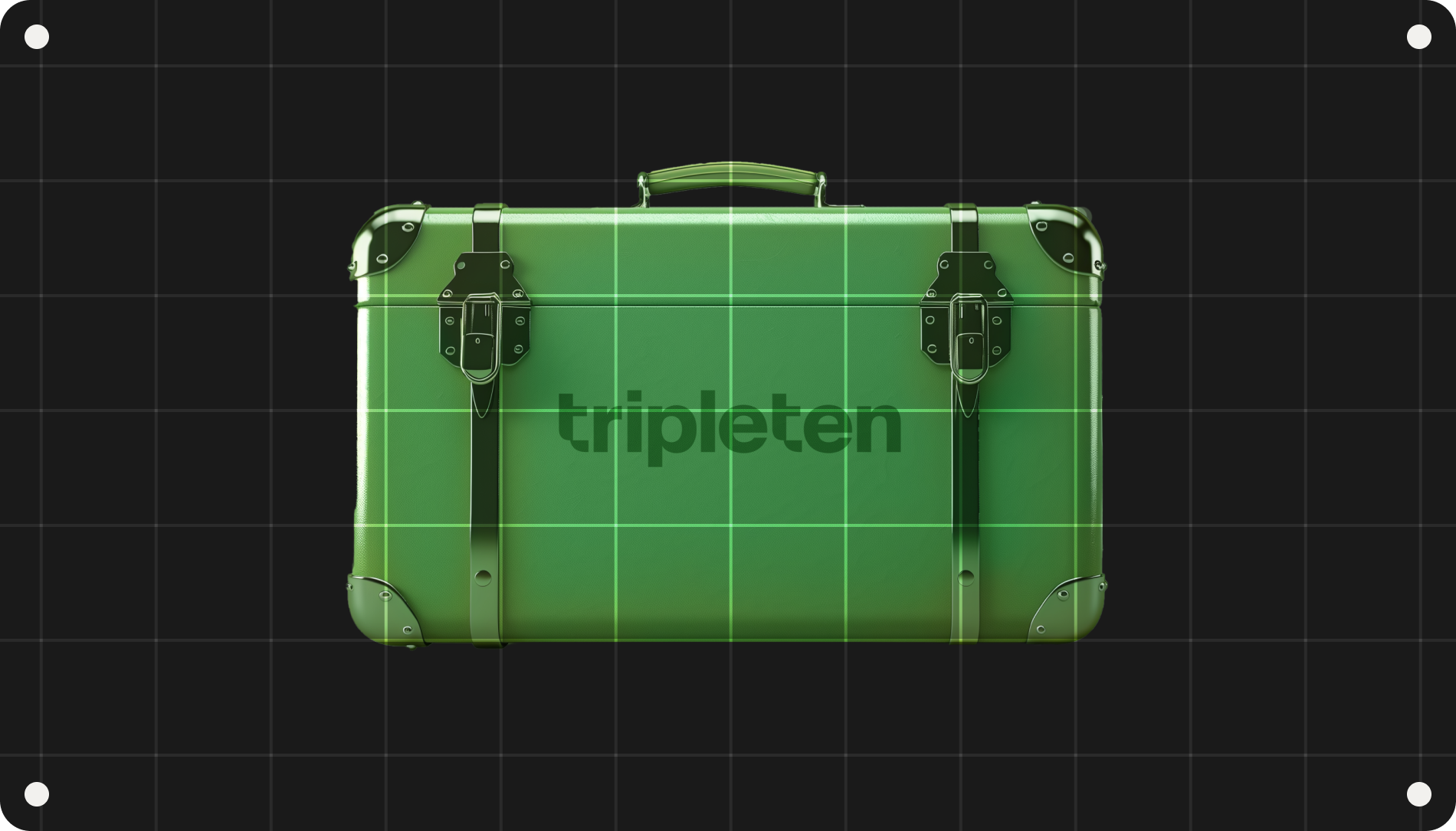As you start to learn data science, you quickly learn that using a coding editor makes life a whole lot easier. In this article, we’ll review one of the most popular, powerful, and useful ones — a Jupyter Notebook. Let's find out how this coding editor works, why you need it, and spell out its benefits and drawbacks.
What is Jupyter Notebook?
Let's say you work for a shipping company. The company wants to see how shipping regions correlate with shipping methods for each customer.
You package all data in a special script, and the program runs it and draws a relevant graph directly under the code. The company uses this graph for business optimization and pays you for the job. (Profit!)
Jupyter Notebooks are perfectly suited for solving problems like these in the way they flawlessly present the data and visualize it for data analysis research.
Jupyter Notebook is a web application where you can write, edit, run, and share your code and documents, created in over 40 programming languages, including Python. You can write code in parts, run it immediately, and see the realization of your programming in one document, adding narrative text, equations, charts, and other multimedia.
You don't have to run the script from the beginning because the code is written in cells, and you can run each piece of code individually in any order. Imagine drawing a part of a complicated mechanism ― say, an aircraft engine ― on a piece of paper and seeing it come alive and showing how it works.
A Jupyter also allows you to simultaneously observe the code and what the resulting work looks like. Jupyter Notebook features make this tool the most common choice for working with data, programming in Python, or assuming becoming a professional data scientist or data analyst.
Jupyter Notebook use cases
A Jupyter Notebook is mostly used in Big Data and data science, machine learning, data visualization, mathematical statistics, analysis, the kind of development that requires step-by-step programming, as well as Python coding study.
Python programmers traditionally work in Jupyter, because it was created for this language. However, you can use special so-called “magic commands” to switch a notebook to a specific language, such as Ruby, R, or Perl.
You can use Jupyter Notebook to:
- Demonstrate in a clear manner that your project performs accurately
- Share your work with other developers and collaborate
- Run code in parts in any order or in whole
- Work in the cloud or locally
- Develop interactively
- View a code, an output, and a visualization at the same time
- Try other specialists' code and see how it works
Pros and cons of learning Jupyter Notebook
Let’s look at the pros and cons of the Jupyter Notebook for those starting to learn this tool.
Pros
- Visual. Can see both the code and the result immediately in a single document. You can experiment and learn, identify, fix bugs, and test and show your work.
- Can write and run code in fragments. It allows an understanding of how the code works while you’re studying or running individual lines of code to see if they work as you thought, particularly when you aren't an experienced programmer.
- Easy to share. Good for teamwork, that's why a wide range of companies use it for collaboration. For example, you can create and share your Jupyter Notebooks in Google Colab, storing them on Google Drive with no need to download or install anything.
- Open-source. Free to download as Jupyter software itself, or as a part of the Anaconda toolkit — the most popular Python distribution for data science with automatically loaded libraries and tools.
- Easy to customize. Convenient to work with and flexible, with available additional functionality. For example, it supports Markdown — a markup language — to create interactive articles and reports with neatly structured content.
Cons
- Code duplication. Highly possible to accidentally duplicate code written in fragments, which makes it hard to maintain and collaborate in pursuing a singular objective in a large team.
- Confusing. Hard to produce the code, as it can be messy if you execute a lot of code pieces in the incorrect order. Messy code can be the reason for frustration and errors, leading to low productivity for data scientists with a lack of experience.
Why Jupyter is good for newbies
The Jupyter Notebook interface is simple and user-friendly. It allows you to write the code, observe its execution, and visualize it in a single document. As a result, you learn quickly. This gives it an important edge, as other tools force you to download a separate file or open a new window every time you run a part of your code. It makes the work less productive and more complicated.
Let's say you create a simple calculator, web scraper, or chatbot. With Jupyter you can run independent lines of code until it works as you desire, without the need to rerun all the code. In other code editors, in case of errors, you have to modify the code and rerun the entire program, then wait for a result and continue until it works as intended. In Jupyter you can rerun a specific piece of code (instead of the entire program), edit it, and then run the program.
It works like a perfect tutorial on its own, so you can practice as long as you need to, enabled to leave your notebook. You can also easily share your code and collaborate on it. In sum, Jupyter Notebook may be considered the best option for a newbie Python developer or data scientist. You can learn using Jupyter on your own or learn the skill as part of a wider Python or data science course. Your learning curve depends on the goals you pursue and the tasks you want to be able to complete.
How to get started with Jupyter Notebook
You can easily get to know Jupyter Notebook by studying Python and data science and exploring new functions, as your tasks become more complex. As your experience grows, so will your Jupyter skills.
Tutorials can help you structure information to speed up learning. Interactive Jupyter tutorials are usually made in Jupyter Notebooks. One of the highly recommended Jupyter tutorials for complete beginners is “Getting Started With Jupyter Notebook For Python” by Medium. You may also choose a video tutorial.
Online data science and Python programming courses offer the chance to learn different data science tools, including Jupyter. You may choose the desired level, from just several hours to several months in length. TripleTen's Data Science Bootcamp, for example, does not require any prior Python or Jupyter experience, fits any level, and will prepare you for a career as a data scientist or machine learning engineer.
To begin exploring Jupyter Notebook, you need to set it up on your computer. For this, go to the Jupyter official website. Select if you want to try it in your browser through a cloud, for instance, Google Colab, or install it.
Let's go through a few installation options.
- First, choose between two options: install the Anaconda package to get Jupyter Notebook, Python, and the most popular libraries and tools, or use Python's package manager pip to install Jupyter.
Anaconda can be a great choice for a beginner in creating a development environment from scratch. If you decide to install it, just proceed to the official Anaconda website to download and install the latest version.
- If you don't want to start with Anaconda, download the latest version of Python and type pip install jupyter in the command prompt or PowerShell.
- When the installation is complete, enter the command jupyter notebook in the command prompt or PowerShell.
- The Jupyter Notebook will be launched in your browser with the URL “http://localhost:8888”.
- Now you are ready to work with your first Jupyter notebook!
Alternatives for Jupyter
Jupyter drawbacks may be the reason for looking for alternative tools for your work. All of them have their advantages and disadvantages to review.

Different notebook applications fit specific tasks. For example, if there is a big project requiring various languages, a reasonable solution would be to use Visual Studio or other multifunctional development environments.
In short
The Jupyter Notebook is an interactive environment with important features, such as effectiveness, simplicity, visibility, convenience, and compactness, all of which make it a popular and highly competitive workspace.
As a great tool for prototyping, presentation, experiments with code, and sharing your notebooks, Jupyter will definitely speed up your data science workflow if you aim to work with data.
Overall, Jupyter Notebook is a great option to get started with either Python, machine learning, or data analysis ― even when you have no prior experience.
.png)









.png)






